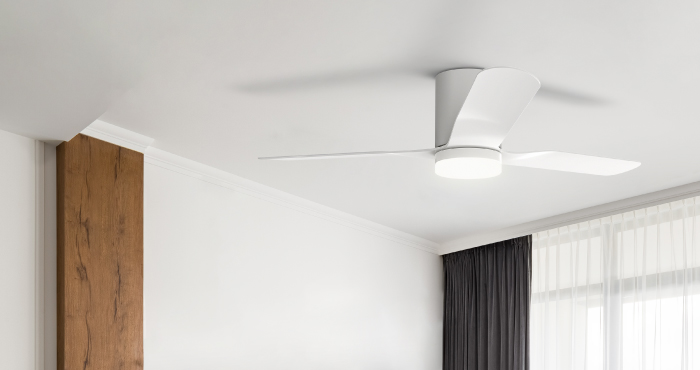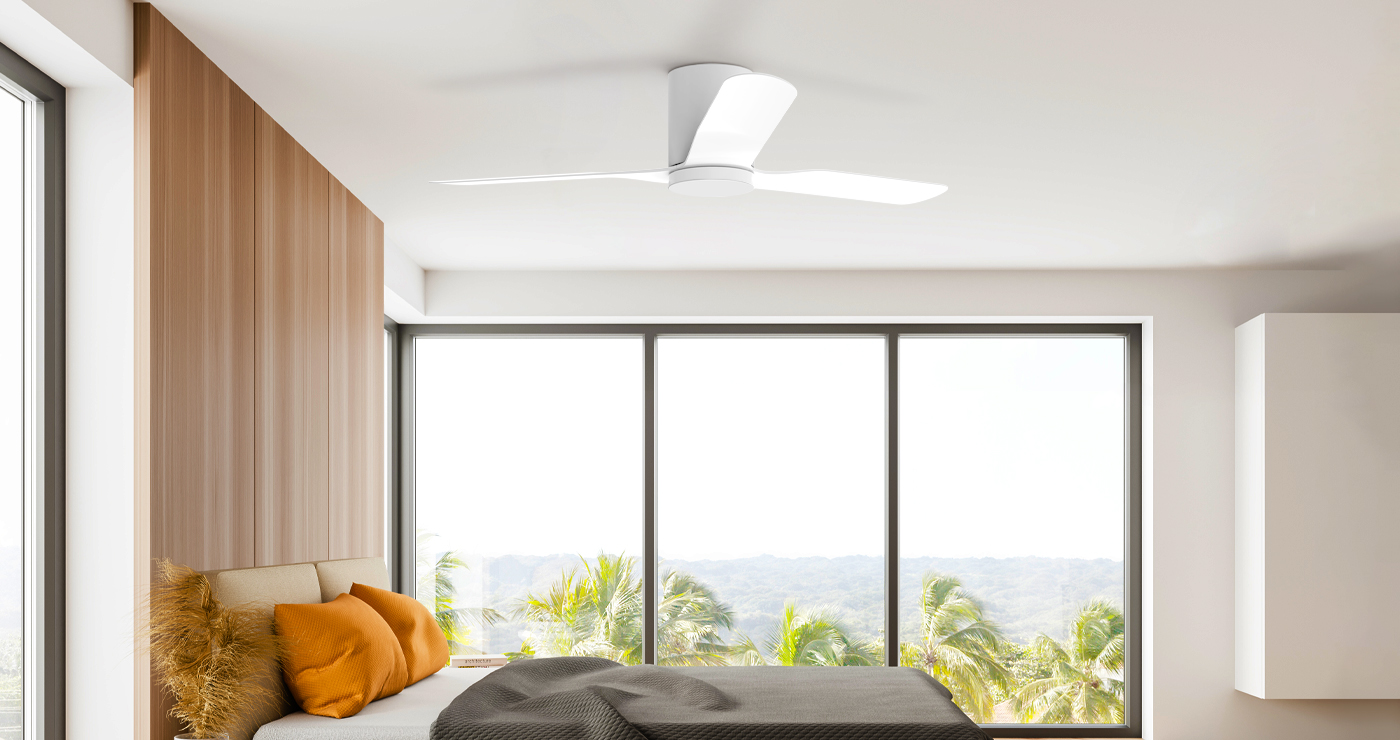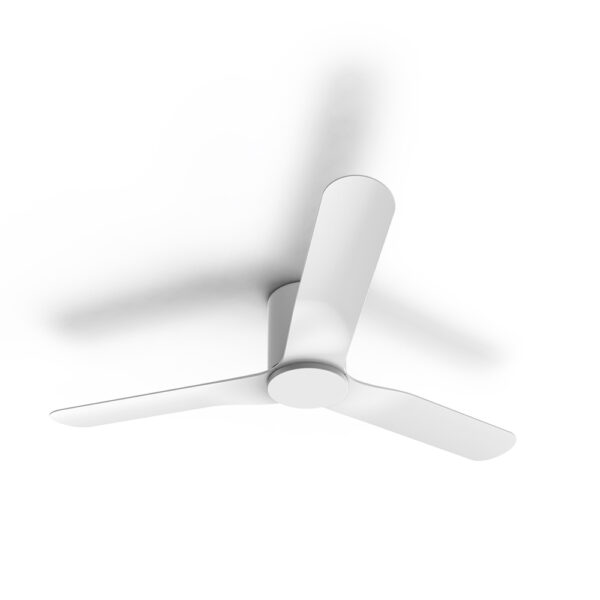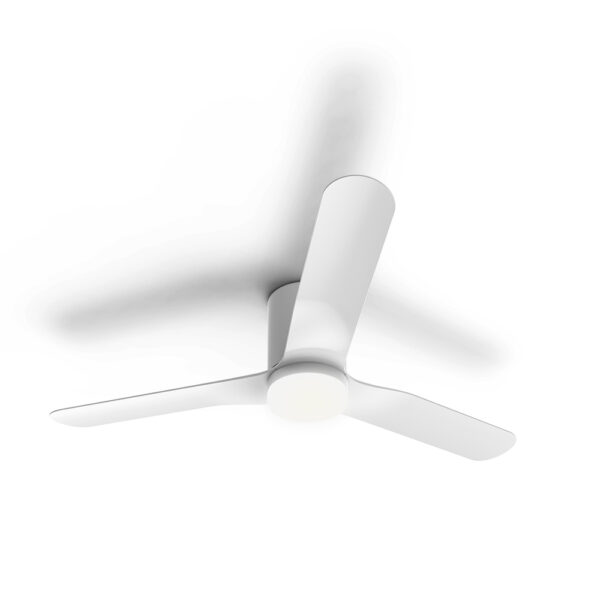What are Low-Profile Ceiling Fans?

Having a ceiling fan close-by in summer to keep the heat at bay can be a wonderful thing, but no one likes a ceiling fan that feels too close. For rooms with a lower ceiling than usual, a standard ceiling fan can hang too low, leading to the uncomfortable feeling of danger close overhead.
A low-profile ceiling fan, also known as a hugger or flush-mount fan, is designed with these spaces in mind. These compact fans feature a shorter distance between the ceiling and the blades (also known as ceiling drop), offering crucial extra centimetres of clearance. This makes them a smart choice for older homes built before NCC mandatory ceiling height requirements were introduced in 1996, downstairs rumpus rooms, or apartments with a tighter ceiling clearance.
When to use a Low-Profile Ceiling Fan?
According to Australian standards, there should be at least 2100mm distance between the floor and the blades of a ceiling fan. Since most standard downrod fans have a ceiling drop of around 300mm, rooms with ceilings lower than the typical 2.4 metres generally require a low-profile fan to meet safety requirements. The Atom Air Anglesea Fan, for example, is only 212mm between the ceiling and the bottom of the blades – nifty.

Not just for safety, some people may prefer to use a hugger fan in a room with a standard 2.4 metre ceiling (or higher) to help create the feeling of space and the illusion of a higher ceiling. In a small room, a low-profile ceiling fan offers a great balance of cooling power and a compact package.
But there can be trade-offs. Less clearance between the ceiling and the blades means less space for air to circulate above the fan which may mean less air movement overall. However, modern DC fans like the Anglesea are powerful and efficient, offsetting some of this effect. Additionally, the low height of these fans and the way they typically mount make them suitable for flat ceilings only.
If you are considering a low-profile ceiling fan, make sure to measure clearances not just to the floor, but to walls, doors, and furniture as well. Fan blades should be no closer than 300mm to any wall to prevent turbulence.

A Smart Solution for Modern Spaces
Low-profile or hugger ceiling fans offer a practical and space-saving solution for rooms with lower ceilings, without sacrificing performance or style. With a wide variety of designs, finishes, and features—including integrated lighting and remote controls—these fans are a popular choice for homeowners looking to enhance comfort and aesthetics.
For more answers to commonly asked questions on ceiling fans, see our FAQ, and browse our full range of ceiling fans here.
Related products





